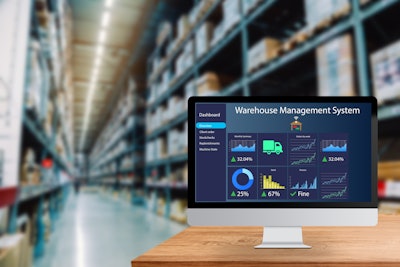
When it comes to supply chain management, advanced technologies are playing a pivotal role in optimizing operational efficiency and ensuring regulatory compliance. In the food industry, recalls can cost food manufacturers millions of dollars, and sometimes, their entire consumer base. And, with government regulations like the Food Safety Modernization Act (FSMA), manufacturers and distributors are required to track and trace products from the moment it arrives in the warehouse to the moment it’s purchased by a consumer.
Fortunately, technologies like warehouse management systems (WMS) are offering a better way for retailers to gain real-time visibility into inventory levels, locations, and movements. An effective WMS will help warehouses and distribution centers (DCs) manage inventory in a fast, easy, and efficient way and will harness the ability to track.
1. Batches
In the supply chain, everything is fast moving. Products are continuously being created and put on store shelves. As these products move throughout the supply chain, keeping track of the inventory is critical, and an integral part of this is batch tracking. Batch tracking refers to the process of tracking a group, or batch, of similar items that were produced at the same time, by the same manufacturer, in the same facility. Typically marked with an identification number or date, batch tracking allows companies to easily identify and isolate any defective items, before the entire batch is sold and consumers are put at risk. This level of traceability is crucial for compliance and gives retailers the agility to act fast. And, because each batch can be precisely identified and monitored throughout its lifecycle, a WMS helps distributors reduce errors in picking, packing, and shipping.
Further, the ability to track batches within the warehouse optimizes order fulfillment by helping distributors understand the characteristics of each batch to prioritize the allocation of stock based on factors such as production dates or specific customer requirements. The level of visibility a WMS provides into batch data gives retailers the insights needed to make strategic business decisions, including inventory reordering, storage allocation, and production planning.
2. Expiration dates
The consumer demand for freshness is higher than ever, largely driven by fitness trends and a result of the pandemic. In response to these demands, grocers are having to put more products on the shelf, while still prioritizing safety and ensuring products are sold before expiring. And, in industries like food, tracking expiration dates could be a matter of life and death. Luckily, a robust WMS system can help warehouses keep track of all the item expiration dates and helps keep expired products from being picked and packed.
Additionally tracking expiration dates helps prevent excess inventory and helps DCs free up valuable warehouse space by avoiding overstock citations. A WMS system can help optimize stock levels and ensure there’s enough stock on hand to meet upcoming projected sales demand. And, in the case of understocks, a WMS can tell manufacturers where to ramp up production. By leveraging a WMS, manufacturers and distributors can benefit from timely alerts for products nearing expiration, allowing for timely actions such as discounting, repositioning, or even disposal. Efficient shelf rotation is critical to maintaining product quality and ensuring that older stock is sold before newer batches. A WMS facilitates this by providing visibility into expiration dates and automating stock rotation procedures.
3. Serial numbers
While batch tracking uses lot numbers to identify groups of products, serial numbers provide a unique identity to each individual item within the batch, giving every single product its own distinct serial number for precise tracking. Serial numbers are stored and tracked within a WMS to help warehouse managers achieve a clearer, and more organized system for tracking and tracing to eliminate bottlenecks, maintain accurate record keeping, and meet consumer standards. By assigning serial numbers to individual inventory items, businesses can keep track of products throughout the entire inventory lifecycle and beyond.
Further, serial number tracking helps businesses in fraud prevention by enabling them to quickly identify and address instances of theft or unauthorized distribution. And, in the event of fraud, serial numbers help brands assure customers that products are authentic and is a helpful tool in combating counterfeits, which is a rising concern for retailers.
Implementing a robust WMS
Track-and-trace capabilities are essential for businesses and a robust WMS plays a powerful role in optimizing this process. With the ability to track serial numbers, distributors can ensure regulatory compliance, optimize order fulfillment, and improve customer satisfaction. By integrating a smart WMS into warehousing operations, businesses benefit from more strategic decision-making along with operational efficiency, risk mitigation, and sustained growth.



















